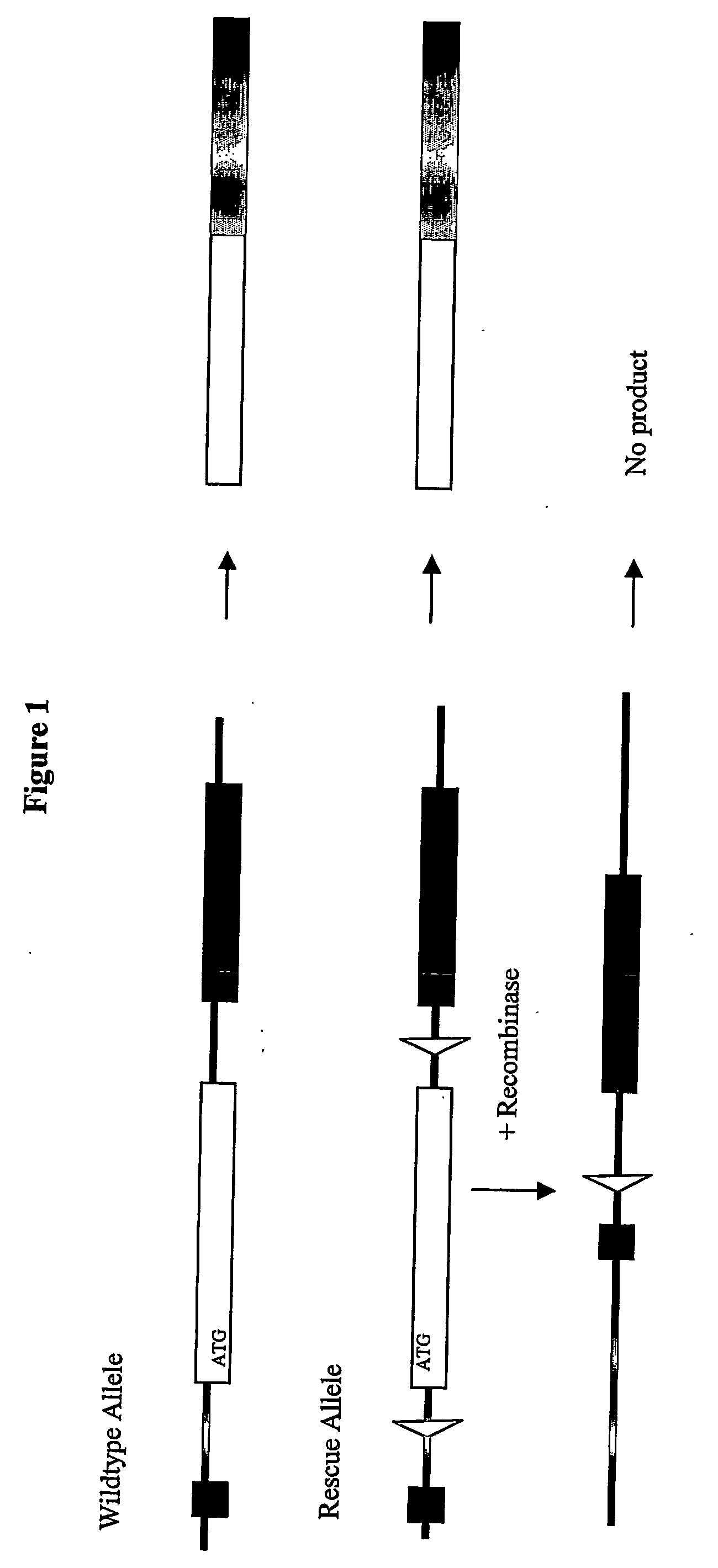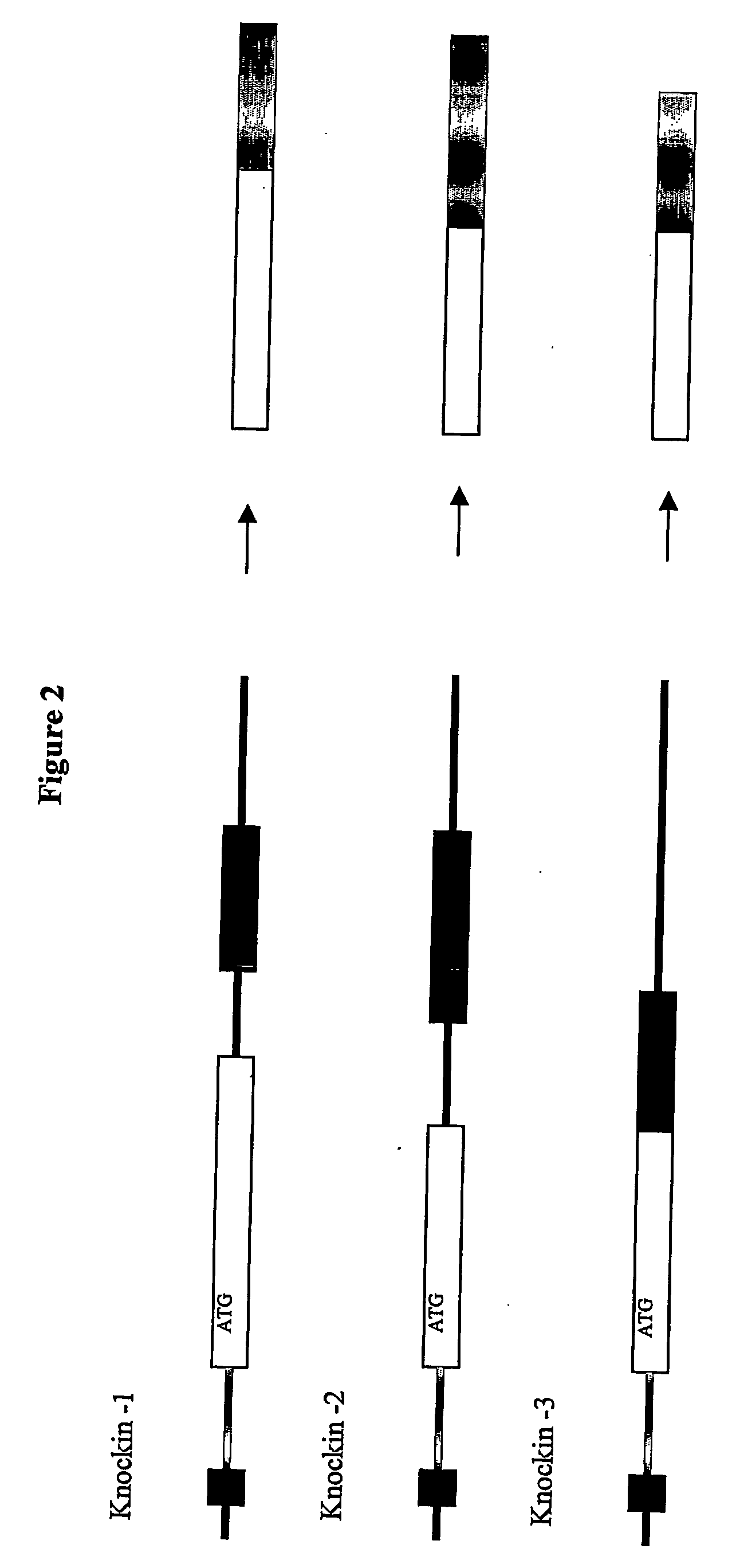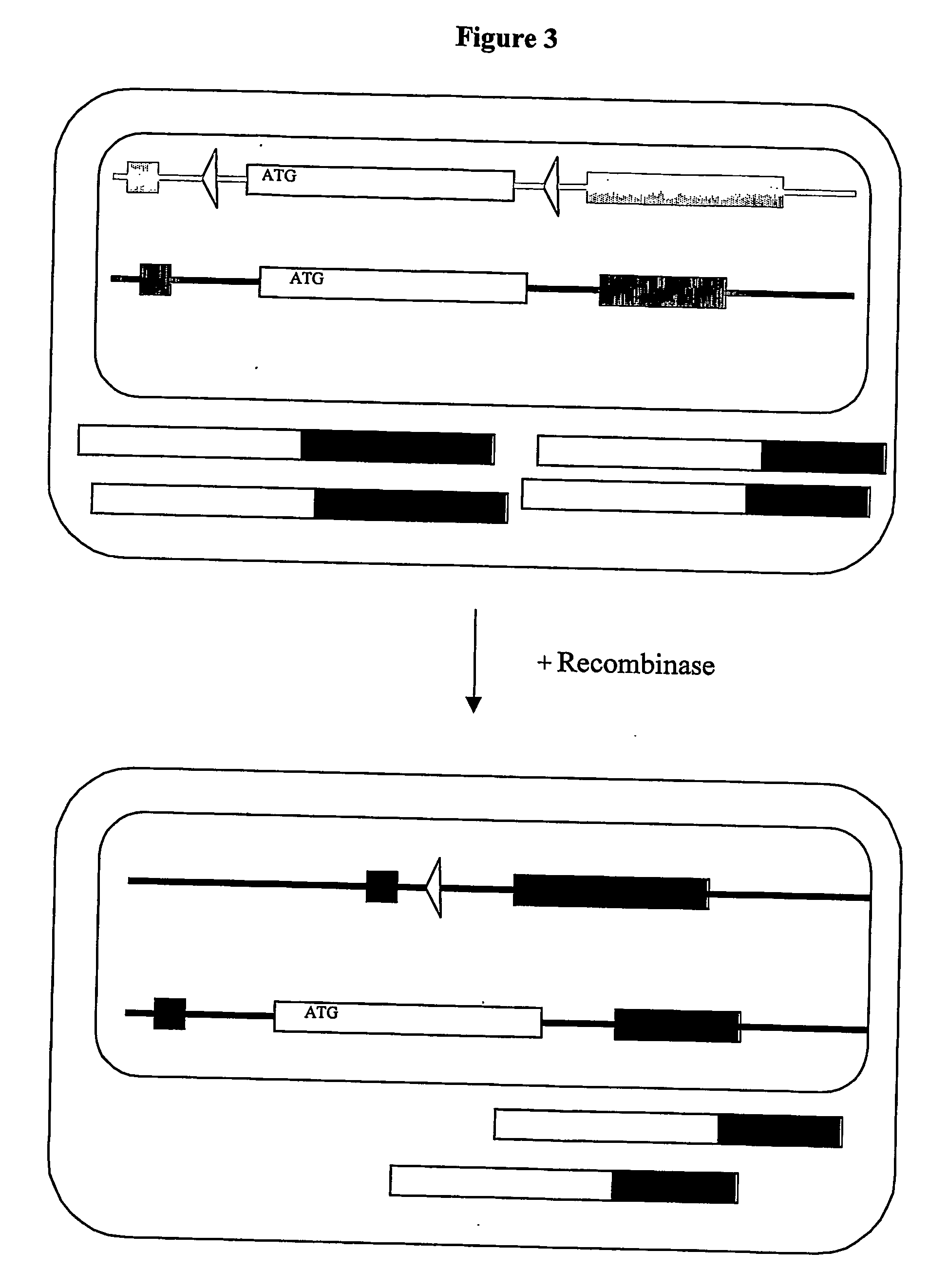Inducible site-directed mutagenesis through conditional gene rescue
a gene rescue and site-directed mutagenesis technology, applied in the field of inducible site-directed mutagenesis through conditional gene rescue, can solve the problems of inability to combine the different techniques, lethal inactivation or functional modification of genes or regions, and inability to achieve the flexibility of the system as it is presen
- Summary
- Abstract
- Description
- Claims
- Application Information
AI Technical Summary
Problems solved by technology
Method used
Image
Examples
example 1
Cloning of the Knock-In Vector to Introduce the Targeted Deletion
[0050] A targeting construct was assembled by standard procedures using long range genomic PCR (LA PCR 2.1 from Takara). A 1.5 kb fragment containing M-line Exon 2 was subcloned into a plasmid containing a FRT-site flanked neomycine resistance gene. The long arm (7 kb) contains 4 kb 5′ of M-line Exon 1 and a deletion mutant of M-line Exon 1 that was engineered by PCR-based gene assembly to lack titin's MURF-1 binding site. The targeting vector was verified by sequence analysis of all exons, the M-line Exon 1 deletion, and the proper integration of the neomycin resistance cassette into the intron 3′ of M-line Exon 1.
example 2
Cloning of the Knock-In Vector to Introduce the Targeted Mutations
[0051] Additional knock-in vectors with mutations of titin's kinase active site were constructed using the knock-in vector lacking titin's MURF-1 binding site by exchanging M-line Exon 1 without the MURF-1 binding site to a M-line Exon-1 using unique restriction sites within M-line Exon 1. The kinase-site included within the M-line Exon 1 internal fragment was mutagenized using the quick-change kit from Stratagene according to the manufacturer's instructions.
example 3
Construction of the Rescue Vector
[0052] A targeting vector to introduce a rescue allele was assembled from a mouse genomic BAC clone (bacterial artificial chromosome library MGS1 from mouse ES cells; Genome Systems / Incyte Genomics) spanning the 5′ region of the mouse titin gene. A PCR-based strategy was used to introduce neomycin expression cassette flanked by IoxP- and FRT-sites into the Intron 5′ of Exon 2, which contains the ATG. A lox-site was inserted 3′ of Exon 2. The targeting vector was verified by sequencing.
PUM
| Property | Measurement | Unit |
|---|---|---|
| flexibility | aaaaa | aaaaa |
| temperature | aaaaa | aaaaa |
| size | aaaaa | aaaaa |
Abstract
Description
Claims
Application Information
 Login to View More
Login to View More - R&D
- Intellectual Property
- Life Sciences
- Materials
- Tech Scout
- Unparalleled Data Quality
- Higher Quality Content
- 60% Fewer Hallucinations
Browse by: Latest US Patents, China's latest patents, Technical Efficacy Thesaurus, Application Domain, Technology Topic, Popular Technical Reports.
© 2025 PatSnap. All rights reserved.Legal|Privacy policy|Modern Slavery Act Transparency Statement|Sitemap|About US| Contact US: help@patsnap.com



